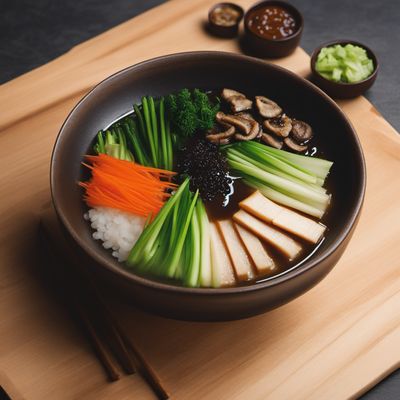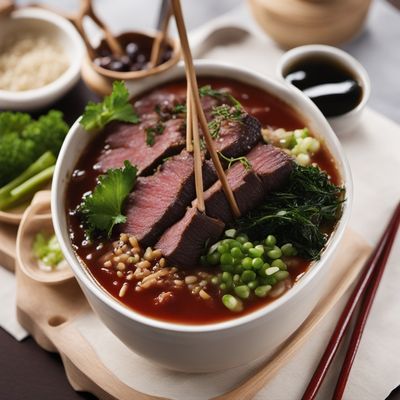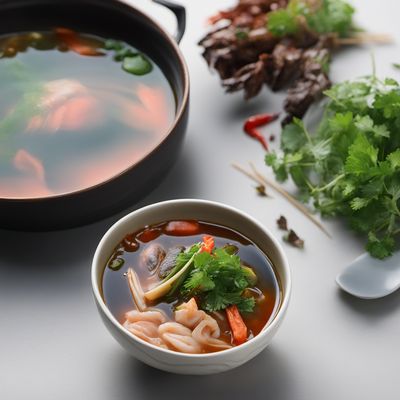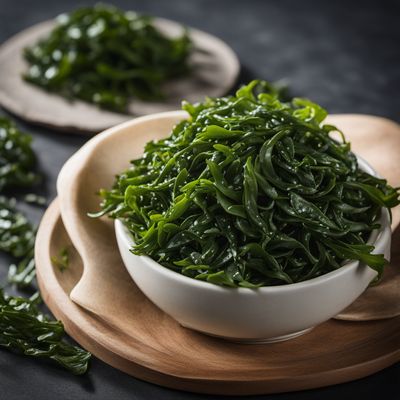
Ingredient
Kombu
The Ocean's Umami Treasure: Kombu
Kombu has a thick, dark brownish-green color and a smooth, slightly slippery texture. It is often sold in dried form and needs to be rehydrated before use. When cooked, kombu releases a deep umami flavor and imparts a subtle sweetness to dishes. It is also known for its ability to tenderize ingredients and reduce cooking time.
Origins and history
Kombu has been a fundamental ingredient in Japanese cuisine for centuries. It is believed to have been introduced to Japan from China during the Nara period (710-794). Kombu is harvested from the cold waters of the Pacific Ocean, particularly along the coast of Hokkaido, Japan's northernmost island. It holds great cultural significance and is used in traditional ceremonies and celebrations.
Nutritional information
Kombu is low in calories and fat, making it a healthy addition to meals. It is a good source of iodine, which is essential for thyroid function. Additionally, kombu contains various minerals, such as calcium, magnesium, and potassium. It is also rich in dietary fiber, which aids in digestion.
Allergens
There are no known allergens associated with kombu.
How to select
When selecting kombu, look for sheets that are pliable and free from any signs of discoloration or mold. The color should be dark green or brown. Avoid kombu that appears brittle or has a strong fishy odor, as it may indicate poor quality. Opt for organic or sustainably harvested kombu whenever possible.
Storage recommendations
To store kombu, keep it in a cool, dry place away from direct sunlight. It is best to store it in an airtight container or a resealable bag to prevent moisture absorption. Properly stored kombu can last for several months. Once rehydrated, leftover kombu should be stored in the refrigerator and consumed within a few days.
How to produce
Kombu is primarily harvested from the wild in Japan. However, it can also be cultivated using seaweed farming techniques. Kombu requires clean seawater and a suitable substrate, such as ropes or nets, to attach and grow on. The cultivation process involves seeding the substrate with kombu spores and allowing them to grow in the ocean for several months before harvesting.
Preparation tips
Kombu is commonly used to make dashi, a traditional Japanese broth, by simmering it with water and other ingredients like bonito flakes. It is also used to make tsukudani, a type of seaweed condiment, and is often added to simmered dishes, stews, and hot pots for its umami flavor. Kombu can be used as a natural flavor enhancer in various vegetarian and vegan dishes as well.
Availability
Japan
More ingredients from this category
Recipes using Kombu

Shiitake Dashi with a Twist
Umami Infusion: A Modern Twist on Shiitake Dashi

Homemade Umami Dashi
Savor the Essence: Homemade Umami Dashi Recipe

Sumashijiru (Clear Soup)
Umami Delight: A Clear Soup Bursting with Japanese Flavors

Okinawan-style Beef Fondue
Savory Okinawan Beef Fondue: A Flavorful Twist on a Classic Dish

Okinawan Seafood Soup
Oceanic Delight: Okinawan Seafood Soup

Homemade Miso Ramen
Umami Delight: Homemade Miso Ramen

Bruneian-style Dashi Soup
Brimming Bruneian Broth: A Fusion of Flavors

Yudofu - Japanese Tofu Hot Pot
Silken Delight: A Warm and Nourishing Japanese Tofu Hot Pot

Tempura Udon with Homemade Dashi Broth
Crispy Delights in a Savory Sea of Udon

Homemade Umami Niboshi Dashi
Savor the Essence: Homemade Umami Niboshi Dashi


